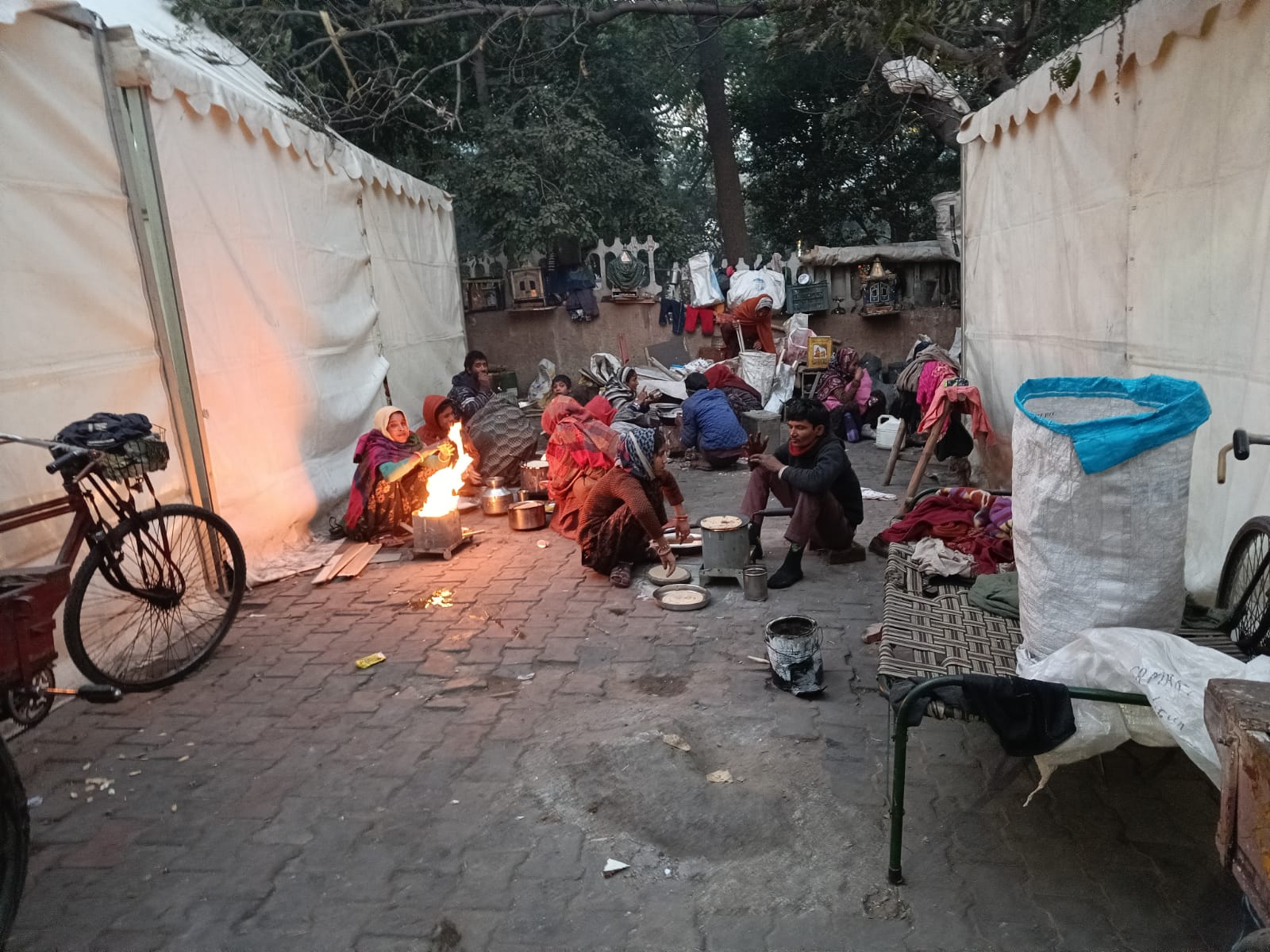NEW DELHI: Opposite the old Delhi railway station, a cluster of around 12 feet tall cluster of white tents becomes a common scene every winter. These tents are shelter homes for many homeless people. As the cold is increasing, both the government and NGOs have set up temporary shelter homes around the capital.
Parveen Singh was sitting at the entrance of the shelter home and was noting down the names of people who will take a sojourn in the shelter home for the night. The tent was able to accommodate 30 persons “but sometimes more people come and, in this case, we lay down mattresses on the ground,” said Parveen Singh. He is working as a caretaker at the shelter home and, according to him, this year, there are more people coming to the shelter home to spend cold nights.
“Earlier our cluster of tents used to accommodate 150-200 people but, this year, the footfall is around 300-400 people,” Parveen Singh said. According to him, this is the start and in the coming days, more people would come to shelter homes because the cold is increasing. He further informed me that at night, they visit nearby areas to rescue drinkers, those who are inebriated and sleep on the streets.
For the last 20 days, the national capital has been enveloped under cold weather. The average temperature at night touches the five-degree Celsius mark and according to the India Meteorological Department (IMD), Delhi is under an orange alert. On 5January, the national capital recorded the season’s lowest temperature, minimum three-degree Celsius. The shelter home where Parveen works is operated by a non-profit organization, SPYM. The organization has been mandated to manage 65night shelters for the homeless by the Delhi Urban Shelter Improvement Board, Govt. of NCT of Delhi. According to SPYM, they provide shelter to 5500-6000 men and women daily.
Neeraj Kumar is one of the homeless staying at the old Delhi railway station shelter home from 20December. Earlier, he was in Punjab working as a labourer but, in December he came to Delhi when he could not find work. Currently, he has made a shelter home as his residence and he is helping the caretaker in managing the place. “As days are passing, people are also increasing,” said Neeraj.
Pawan Kumar, who belongs to Agra, is living in the capital for the last 22 years and to make money, he works as a labourer. “I have never stayed at a shelter home for a night in my whole life. This is my first night in this shelter home,” Pawan Kumar said. According to Pawan, he has spent two decades sleeping on the footpath, but this bone-chilling cold has compelled him to move to a shelter home.“Earlier, I never came to the shelter home because of lice and cleanliness issues, but now this weather is intolerable for me,” Pawan Kumar said.
The politics over shelter homes has started to heat up in the national capital. In mid-December, the Delhi government launched the winter action plan to rescue the homeless from the chill. But last week, Delhi BJP claimed that in the last 30 days, 162 homeless people died because of reasons like cold and hunger.
The Sunday Guardian also visited the Sant Nagar shelter home; this home is meant for families and this shelter home is also operated by SPYM. This shelter home is made up of tin, but keeping the increasing winter cold in mind, tents are also being erected to accommodate more homeless people.
According to caretaker Pushpa, for the whole year, this shelter home has been operated and many are living here for many years. “But in winter, people are looking for accommodation in the night shelter,” said Pushpa.
According to Vipan Rai, a Board member of the Delhi Urban Shelter Improvement Board, 197 shelter homes are built across Delhi and 250 temporary homes are set up in different areas of the national capital. According to DUIB, they have arrangements to accommodate 22,000 people. These shelter homes provide basic necessities like a place for sleeping, blankets and two-time food to the destitute. But often, it is seen that these places remain unhygienic and smelly.
As mercury plummets, footfall rises in Delhi’s shelter homes
- Advertisement -

